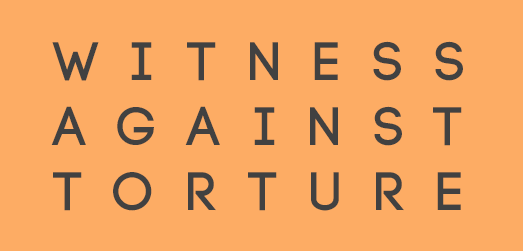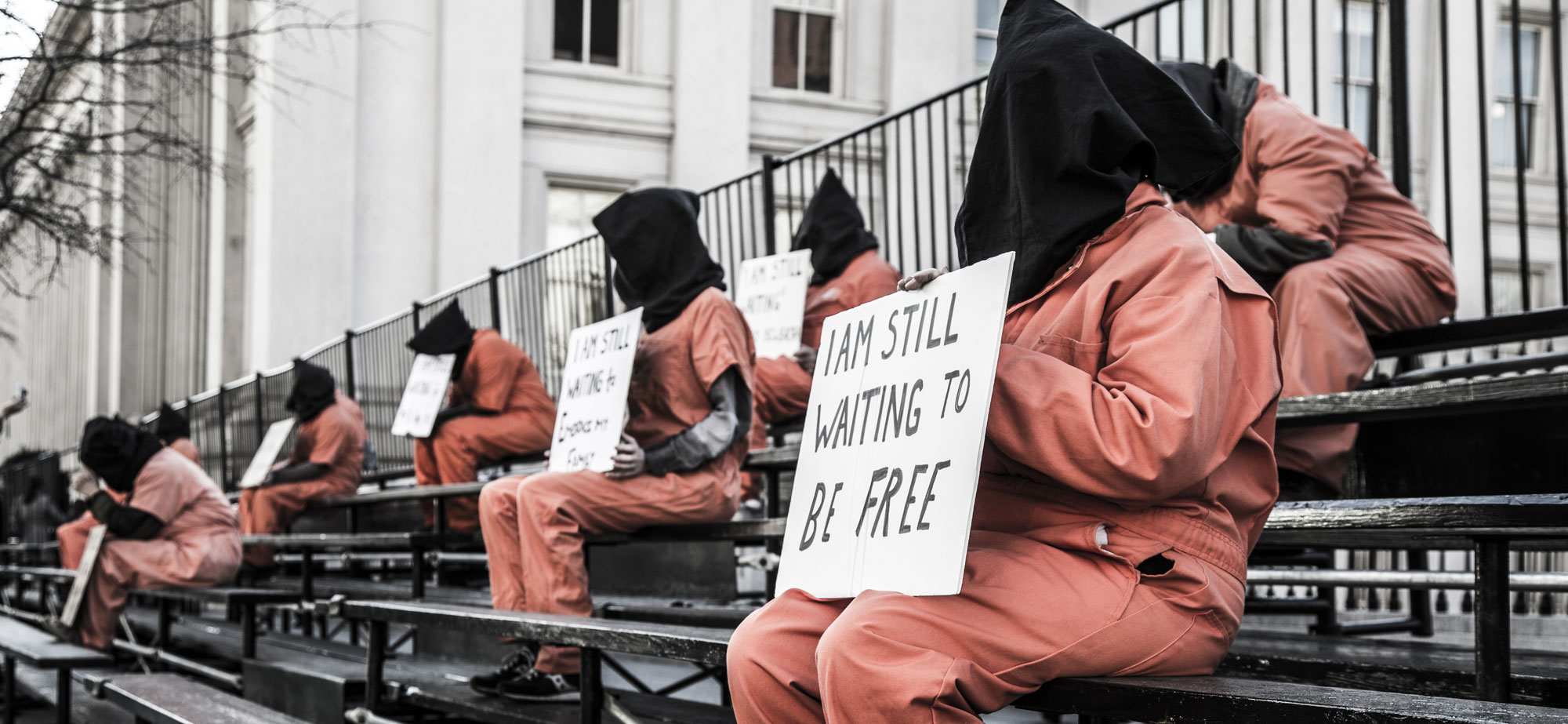From the Archive
Fast for Justice 2013: Day 4
Dear Friends,
Brian Hynes from New York will be happy to know that this year we have recreated his “Plato Meter” – a clever system of gauging (mimetically, not ideally) how far we have come in our fast and how far we have yet to go. In short, in the corner of the main room there is a table with two stacks of dinner plates. For each potential meal during the day, we pass one plate from the larger stack on the right over to the ever-growing stack on the left. Friends, yes indeed, today we have passed the halfway mark!
The passage of this ever-brief time together is manifesting for us in more internal ways: in the aches and pains, lightheadedness and stomach growlings. But although we are more aware of our own bodies and various expressions of need, we turn our attention outward. Our blessing is being able to look after each other quite carefully, supporting each other when we need a break or a nap. We are grateful here to be able to readily reach out to our neighbor in common cause, intensifying the realization of all the barriers preventing us from reaching out to the detainees. So it is that this modest liquid-only fast has created something more. We experience a longing, as Chrissy so eloquently articulated her experience, but this minor physical longing is enough to connect us to the deep longing in the world for solidarity.
And it truly was a day centered on reaching out. We returned to vigil at the Department of Justice, an institution that – after an initial opening to dialogue – has repeatedly ignored our attempts to continue. Then in our unscheduled time between the vigil and our mid-week large group reflection, folks were letter writing to men at Guantánamo, some Muslim men imprisoned in the US and prisoners of conscience here in the United States. We ended the evening with a slideshow presentation from Johnny Barber of his most recent trip to Gaza, as well as a faster’s conference call. Many thanks to all who participated in that conversation — connecting us in DC to friends fasting in Colorado, South Dakota, Iowa, Chicago, Massachusetts, & Connecticut – and remembering too that there are friends even farther away joining the fast — Bud in Northern Iraq, Kathy and Martha in Afghanistan.
But our seven day fast has surprisingly been able to connect us more truly to something even more elusive – numbers that would otherwise remain a mere abstraction. During our faster’s conference call, Rick from Colorado so rightly commented how easy it is to do a week long fast… how nearly impossible to think of enduring hunger strikes for over six months. And then we repeat this number, so heavy on our hearts, of how long Adnan Latif was detained at Guantánamo at the time of his death there: ten years, seven months, twenty-five days.
Let us continue to make connections of peace and love in the darkness.
Yours in solidarity,
Witness Against Torture
In This Update
1) Vigil at the DoJ Report, by Joe Hiller
2) Large Group Reflection, compiled by Amy Nee Walker
3) Recap of Johnny Barber’s presentation by Amy Nee Walker
Links
4) “Andy Worthington Discusses 11 Years of Detention at Guantanamo with Micheal Slate”
6) “U.S. Legal Officials Split Over How to Prosecute Terrorism Detainees” by Charlie Savage
7) Part Two of Sami al Haj Interview from Democracy Now!
Vigil at the DoJ Report
by Joe Hiller
In June of 2010, Witness Against Torture (WAT) wrote the first of many letters to the Department of Justice (DOJ), the full text of which can be found here: http://tinyurl.com/2fbzdxh This letter preceded a meeting with Portia Roberson, the DOJ’s Director of the Office of Public Liaison. In both the letter and the meeting, WAT expressed grave concern over the status of detainees at Guantánamo Bay and other military sites, violations of habeas corpus, and the lack of accountability for torture and other human rights abuses committed by the United States. WAT went on to recommend a series of steps the
DOJ could take to address these concerns, from the broad (ending policies of indefinite detention) to the particular (allowing family visits at Guantánamo). Unsurprisingly—and yet still disappointingly—these communications and multiple attempts at follow-up have not resulted in meaningful action from the DOJ. Accountability is painfully absent as the
DOJ refuses to answer WAT’s call for justice.
This history informed our decision to vigil and “ghost walk” around the perimeter of the DOJ this afternoon. More than 30 activists donned hoods and jumpsuits to process around the DOJ’s perimeter, first in single file, and then, after a pause for standing vigil, we moved in individual meandering paths. During this second phase of the demonstration—the “ghost
walk”—unmasked activists distributed leaflets and spoke with passersby. Everyone reconvened in front of the DOJ for a short ceremony. Alongside a banner reading “Bush Justice = Obama Justice = No Justice,” activists read poems, explained the meaning and purpose of our vigil, and sang out together.
Our action reflected both sadness and hope: as we mourn the passing of Adnan Latif and the eight others who have died behind Guantánamo’s barbed fences, the intolerable cost of continued detention becomes achingly apparent. At the same time, we return to the DOJ again and again in the hope that our actions will effect some change.
Large Group Reflection
compiled by Amy Nee Walker
We are now halfway through the fast. This evening the circle formed to reflect on our experience thus far. Below is a collection of quotes from some of those who participated:
Martin: “It feels like such a blessing to be here…before I come, I tell myself, “don’t waste time, do everything you can….”
Tom: “Today I found myself again experiencing this fear that grips me…I want to crawl into a hole. When will that fear go away? Why is it sometimes so intense? But I have an underlying belief in the goodness of humankind that will ultimately triumph…”
Malachy: “What we’re doing is work, and it is important work, now more than ever…there’s a lot we can’t do, some that others pick up – civil rights activists, lawyers – walking around here I feel there is so much that our government has shut us out from and that can lead to feeling helpless and frustrated.”
Alice: “Wearing the jumpsuit I would always wonder how I was being perceived, were we getting our message out? This year I’ve been doing a lot of leafleting and I see that people are responding. Today, one woman watching the ghost walk said it was ‘so powerful, I could hardly take it.’”
Frank: Last night at the Zero Dark Thirty vigil, there were all these flash bulbs popping – it was like the paparazzi – and yet nobody knowing who you are. And it’s good the anonymity, not needing to be recognized. Then, when I was leafleting today, I handed one to someone who said, “Oh yeah, we saw you on the news last night!” So there is this recognition…But when I was reading that statement (provide text) in front of the DoJ for today’s program, I had this gnawing feeling of speaking into a void, and that’s hard to take.”
Chantal: “Over the years the issues of torture, of indefinite detention, have come to seem so black and white, so obviously outrageous. There are many injustices I could be working on. But I keep choosing this group because of what happens to me here…this opportunity to sit and glimpse a speck of the beauty of each person…
“Last night, at the red carpet, looking in through the glass, I could see people greeting one another, genuinely excited to be seeing each other. It was so human and it feels strange disrupting that…part of being human is seeing the humanity of others…we can’t be fully human without discomfort and calling attention to reality.”
Kevin: “I’ve been a part of many groups…of all the groups I’ve been Witness Against Torture is the most powerful with solidarity because we are always bringing in the names, the stories, the poems, the fasting…it’s very powerful.”
Larry: “Before, when I have worn the hood I have been physically and felt metaphysically alone and angry…wearing the jumpsuit and black hood with you, it’s a totally different experience…silence with peace, not silence with anger…I will never again feel alone under the hood.”
Ryan: “The mind speaks with paragraphs, but the heart explodes with emotion…the idea that I can turn my life into caring and an expression of caring is still in it’s infancy. My work now is to ask questions, listen, keep quiet…I have a full vocabulary, verbally, what I am learning here is to develop a vocabulary of the heart.”
Matt: “I feel like I am not doing enough, and we are not doing enough…I don’t know what our limits are…it’s a powerful space, and I am grateful…the reality of the situation is so dire…when I think, what should we do? I don’t know. But to be in a group of people who push each other, and challenge each other…a group that seems to have no limit – it is amazing. When I think, what can’t we do? I don’t know the answer.
Justin: “It’s good to be able to be here together, to tackle an issue so important and not be isolated…when people back home ask what will happen? I tell them, ‘Oh, we’re going to fast for ten days, and walk around and talk about the worst things imaginable, probably get arrested…and it’s a lot of fun!’”
Ted: “Thinking about connection I find I’m not able to reconcile all that’s left behind at home…so many decisions to make, issues to deal with, things left unresolved…how to refocus? Then I think about the men at Guantanamo, how so many of them were swooped out of their lives – what was left unresolved? What anguish in having that fill their minds, not being able to go back…what if that happened to me?”
Jerica: “During the first fast, I adopted ideas of darkness and light…we are in a nation that pushes away, pushes down what is uncomfortable and wrong, pushes into dark…what we are trying to do is shed light…I don’t think I could have missed this time together.”
Marie: “I have been processing a lot of stories while I’m here…last year I was doing interpreting for survivors of torture and I find myself thinking of them when the hood is on, and how much I want to engage in that work again…I keep thinking of how good it is to be in a community where we all do different parts of this work.
Sarah: “First fast, first time in the jumpsuit…these last few days have been ones of inner work and inner liberation for me…we started at the Pentagon and that was the first place I felt this us vs. them dynamic – I think they’re crazy and they think I’m crazy – for me this is a time of challenging ideas of identities and appearances.”
Chrissy: “This circle is very affirming for me…my first language is more inward, more one on one…the last few years I have been feeling that integrally part of who I am is to care for the world. So I am so affirmed to find the micro and the macro being connected here…I appreciate too the fluid roles, how we all step up and seed the ground for one another.”
Beth: “There is a poem, ‘The Absence That Was a Tree; about a view from a house once a tree is cut down…and I feel that tree cut down, because of those who are not here…but there is not just what you miss, but also the new view, and I am really appreciating the new view that you are all a part of…community for me is the ultimate form of resistance.
Recap of Johnny Barber’s Presentation on recent trips to Gaza
by Amy Nee Walker
Each person here in DC comes to our circle bringing many experiences from which we can all learn. This evening Johnny shared with us video from two separate trips to Gaza; one in the spring of 2011, another following the recent siege of Gaza and truce with Israel.
As the video begins we are face to face with a young Palestinian fisherman with a sharp, lean face. He is reclined on the floor; sitting in front of him is his young son, bright blue eyes staring at the camera, silky black hair, eating snacks. Three fishermen are featured on this first video. The second is an older man with a bandage on his forehead. He is seated, surrounded by children, some close, some standing in the corners. The third man is outside, by the sea and the port of small vessels, 15 foot fishing boats called hasakas. The hasakas sit empty or absent and we soon learn why.
Before the recent siege, Palestinians in Gaza had seen a reduction from a 20 nautical mile (from the shore) fishing allowance to only three miles. Three miles from shore does not provide much fishing to sustain Gaza’s families, but even that became a danger.
“They open fire on us,” the first man says, referring to Israel’s ships that patrol the Mediterranean coast. “They didn’t stop shooting from 7am to 8pm,” the second man says. From the third, “they shoot on all the hasakas.”
The father of the small boy that we were first introduced to had been fishing since he was fifteen. He is thirty now and lost his hand in the shooting. “Without a hand I am useless, I cannot do anything.” But he went on to say that when he first returned from the hospital, “I went in to the house smiling, this is how I face the injury. If I think about it, I will crash down.”
“Even if I was injured and they went away, I would keep fishing so I could feed my family, but they never stop shooting and harassing,” says the older man with the bandaged head. He speaks with fervency, maddened by the situation. This man has been fishing for over thirty years and shares a building with an extended family of 100, all of whom depend on fishing.
After the siege in Gaza this year, Israel signed a truce that allowed the three mile limitation to be expanded to six. Elated fishermen were quickly disappointed as they found that not only did the harassment continue, but it began even within the three mile range. It was common that a Palestinian being attacked in his boat would be arrested, but first he would be commanded to strip down to his underwear, jump in the water, and swim to the Israeli vessel. Two of the men interviewed report being left for hours, naked and cold before being released, one said he was released with nothing, including his clothes. All went home without their boats, which are impounded. Boats that are not impounded were left because they are little more than debris or wooden frames after having been shelled, or having their outboard motors riddled by M-16s. One man gestures in dismay to his blasted motor, “these cost 6000 shekels. I make 10 shekels a day!”
“If we try to go out, we are going to our death…they exploded what we live by.”
“I am sitting here without work; nobody wants to be without work.”
“It is a psychological war…they will close the sea.”
“How will we live?”
This last question was not spoken again but continued to echoed in the next video as we watched a small group of Palestinians go to harvest grain from their fields. Two internationals were present with them as the land was close to what is called “the buffer zone” and it was not unusual for tanks to open fire. Though these landowners were careful to not use mechanized vehicles (a customary restriction imposed by Israelis enforcing the border), indeed, the guns did begin rattling from a tank on the horizon. The international observer called out from a bullhorn, “Stop shooting, these are unarmed civilians harvesting wheat on their own land!” And the fire stopped, then started again. This cycle was repeated three to four times over the ten or so minutes of video that was filmed.
There were more video and photographs, images that conveyed profound and tragic stories, more than I can say. To learn more and see images from Johnny’s time in Gaza, see his website, onebrightpearl.com.



Join us on social media